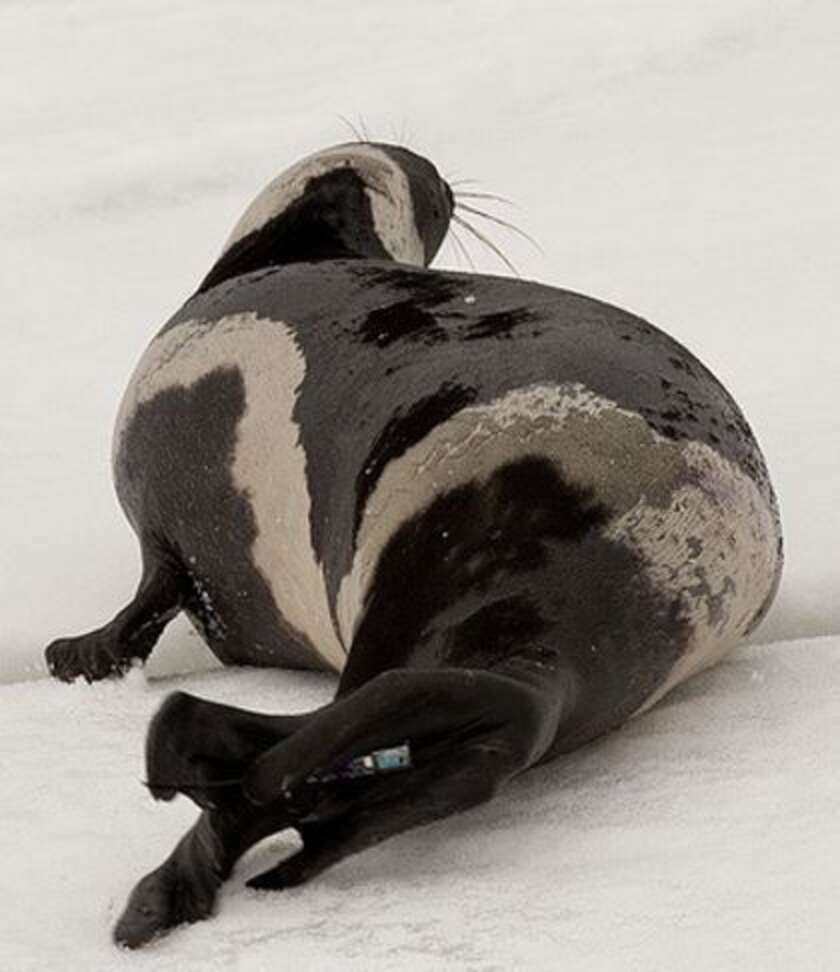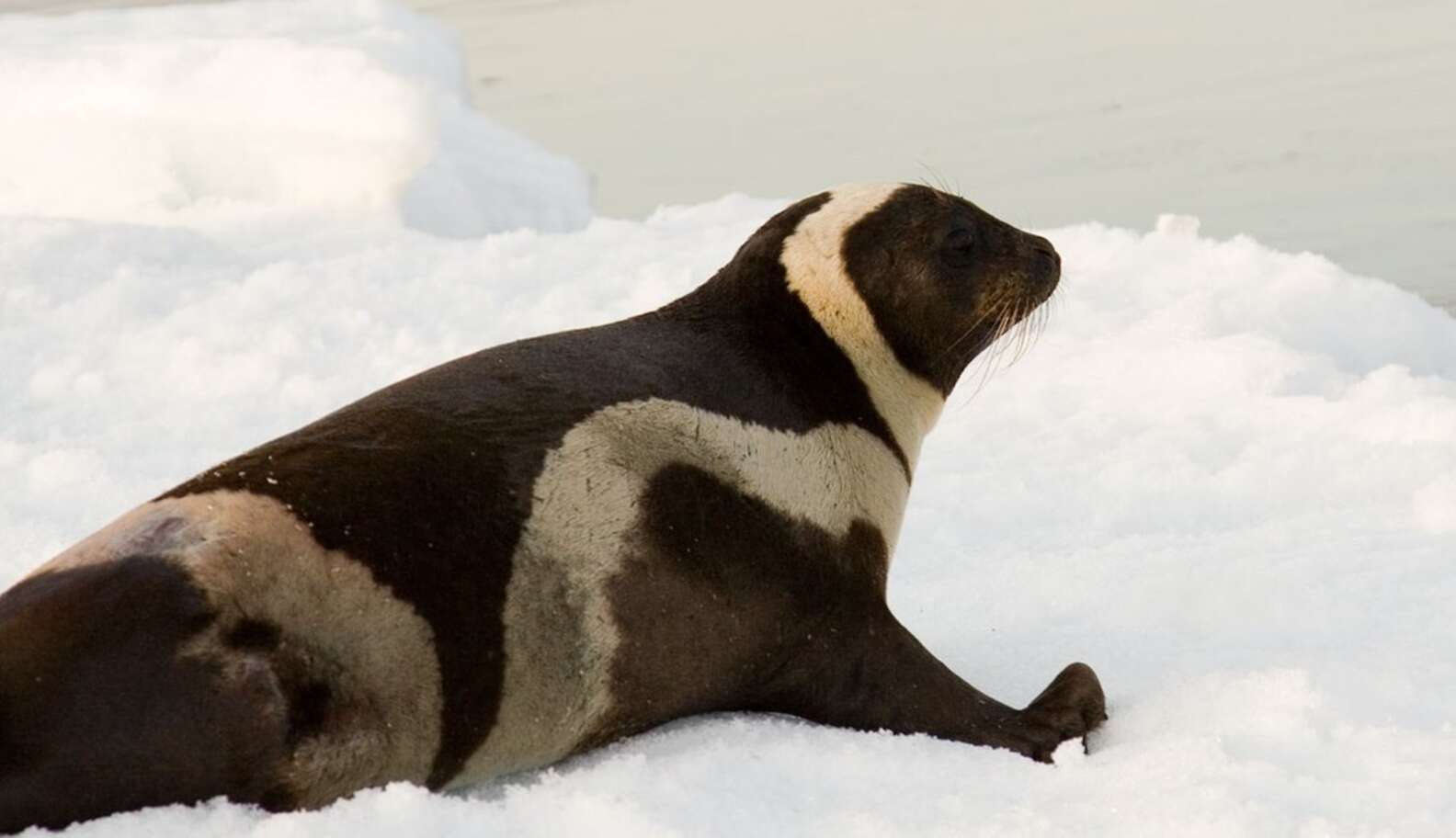Rare Seal Has Four Gorgeous Stripes
It’s not every day one of the world’s most famous sea hermits pays a visit to the beach. And you might think he got all dressed up for the occasion.
When an ultra-reclusive ribboned seal was spotted on Washington’s state’s Long Beach Peninsula in August, marine scientists wasted no time in snapping a picture before the seal ambled back into the waves.
With a population of around 400,000, mostly in the North Pacific Ocean, ribbon seals aren’t especially rare – they’re designated as a species of Least Concern by the International Union for Conservation of Nature (IUCN) Red List.
That puts them squarely on the organization’s lowest rung when it comes to assessing how close an animal is to becoming extinct.
Strange then, that the last ribbon seal sighting was back in 2012, when an adult seal known only as B310 made a cameo appearance on a Seattle woman’s dock.
Unlike their cousins – harbor seals are famous for leaving their babies on shore while they forage for food – these mammals don’t bother much with dry land.
And if they do, it’s generally closer to their traditional home in the High Arctic. Ribbon seals typically frequent the frigid waters off Alaska and Russia, where it might seem their brilliant banded coats are wasted.

Every ribbon seal has four distinct stripes. There’s one around the the lower back, another in front of the back flipper, as well as a band encircling each of the front flippers.
But aside from awing the rare human who comes across one, these bands may also help ribbon seals identify worthy mates.
The seal’s seclusive ways may have also contributed to a sense of mystery. The animals keep their secrets, often literally, close to their vest. For example, they’re the only seals who boast an internal air sac – the purpose of which still eludes scientists.
But sadly, we may start to see more ribbon seals stray from their natural climes. The animals rely on Arctic sea ice for birthing their pups. As that ice steadily disappears, so too does their natural habitat.
And too often, we’ve seen what happens when animals stray too close to where humans live.
Seals spotted on the shore are too often mistaken for being in trouble. But ultimately, the only distress they experience comes at the hands of humans thinking they’re helping.
And yes, some seals do wash up in dire need of human intervention. But in those rare cases, the best thing to do is call the experts, like the National Oceanic and Atmospheric Administration (NOAA), the agency responsible for keeping marine animals safe.

If you come across an animal who looks to be in real trouble, call the agency’s hotline at 800-853-1964.
For more information on how you can help marine animals in need, click here.